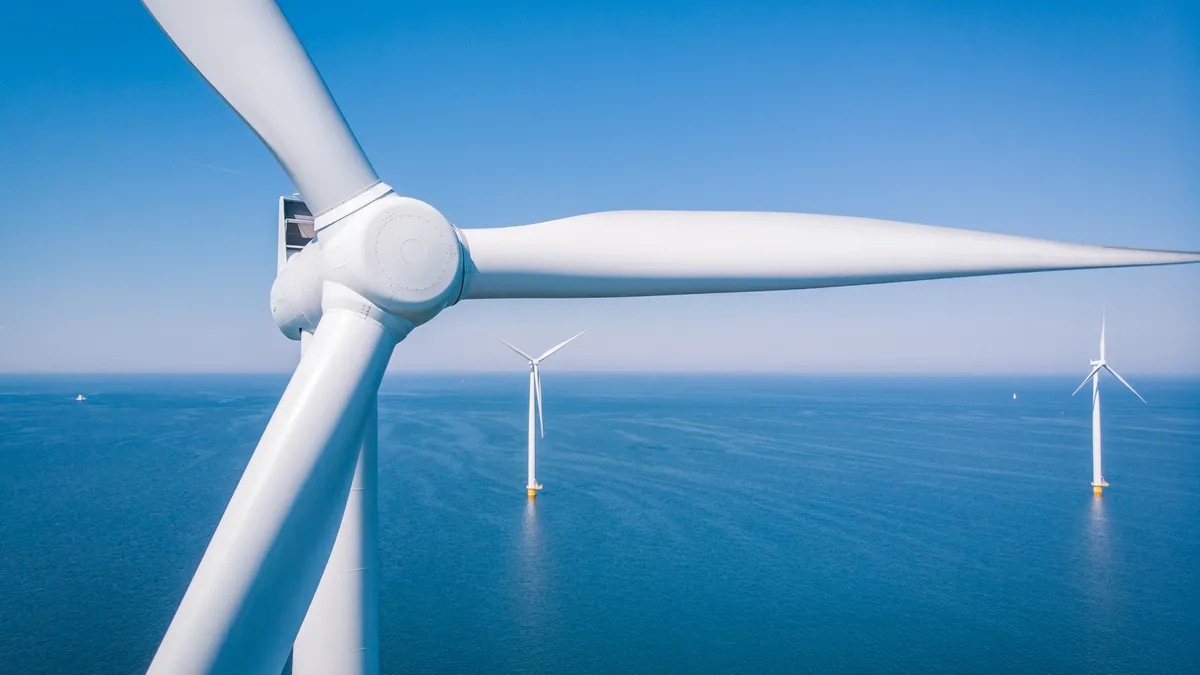Dive Brief:
-
State and regional regulators must reconsider key elements of their offshore wind policies if they wish to see the construction of an offshore transmission network on the East Coast, according to a study and accompanying letter signed in April by industry leaders such as Shell and GE Vernova.
-
Changes in the availability of key pieces of equipment mean that previously conceived concepts such as a mesh-style transmission network may no longer be feasible, according to the study, authored by the consulting group DNV.
-
The letter calls on state leaders to assemble a task force to re-evaluate the feasibility of certain offshore wind project standards in the face of changing technology and supply chain dynamics.
Dive Insight:
U.S. offshore wind policies are not keeping pace with their European counterparts, and that could slow the construction of offshore wind transmission on the East Coast without regulatory intervention, according to the industry-commissioned study.
Many offshore wind requests for proposals require bidders to ensure their projects are built ready to connect to an alternating current, mesh-style transmission network, in which projects are linked to one another to improve reliability.
But European offshore wind projects are moving rapidly to using direct current transmission, which is capable of spanning greater distances than AC transmission, according to Morgan Putnam, a principal consultant specializing in transmission at DNV. Because Europe dominates the offshore wind industry, this shift toward DC transmission is taking manufacturing capacity with it and limiting the availability of appropriate AC cables and equipment, Putnam said.
“Plans for an AC mesh solution are no longer viable within the proposed time scales,” as a result of these changes in offshore wind standards and manufacturing, Putnam said.
The industry is also moving rapidly toward using higher-capacity 525-kV HVDC bipole circuits instead of 320-kV symmetric monopoles, Putnam said. While U.S. offshore developers can still plan to use 320-kV transmission lines for the time being, Putnam said regulators need to begin to consider steps that would enable the use of the higher-voltage cables to avoid potentially running into supply shortages.
Most system operators have rules on the books that limit the voltage of transmission lines, Putnam said. While it's possible to limit the flow of power on a 525-kV cable to meet these standards, he said, it's not economical.
Moving to 525-kV cables could also come with a host of benefits, such as reducing the total number of cables needed by each offshore wind platform, which would in turn reduce the impacts of offshore wind in areas such as New York, where shorelines and harbors are already congested.
“We are part of a global market, and the HVDC equipment manufacturers are in the envious position of having demand for their products far exceed supply,” Putnam said. If U.S. projects do not keep pace with shifting industry standards, he said, deviations from international norms will add complexity to U.S. projects that could jeopardize their success.














